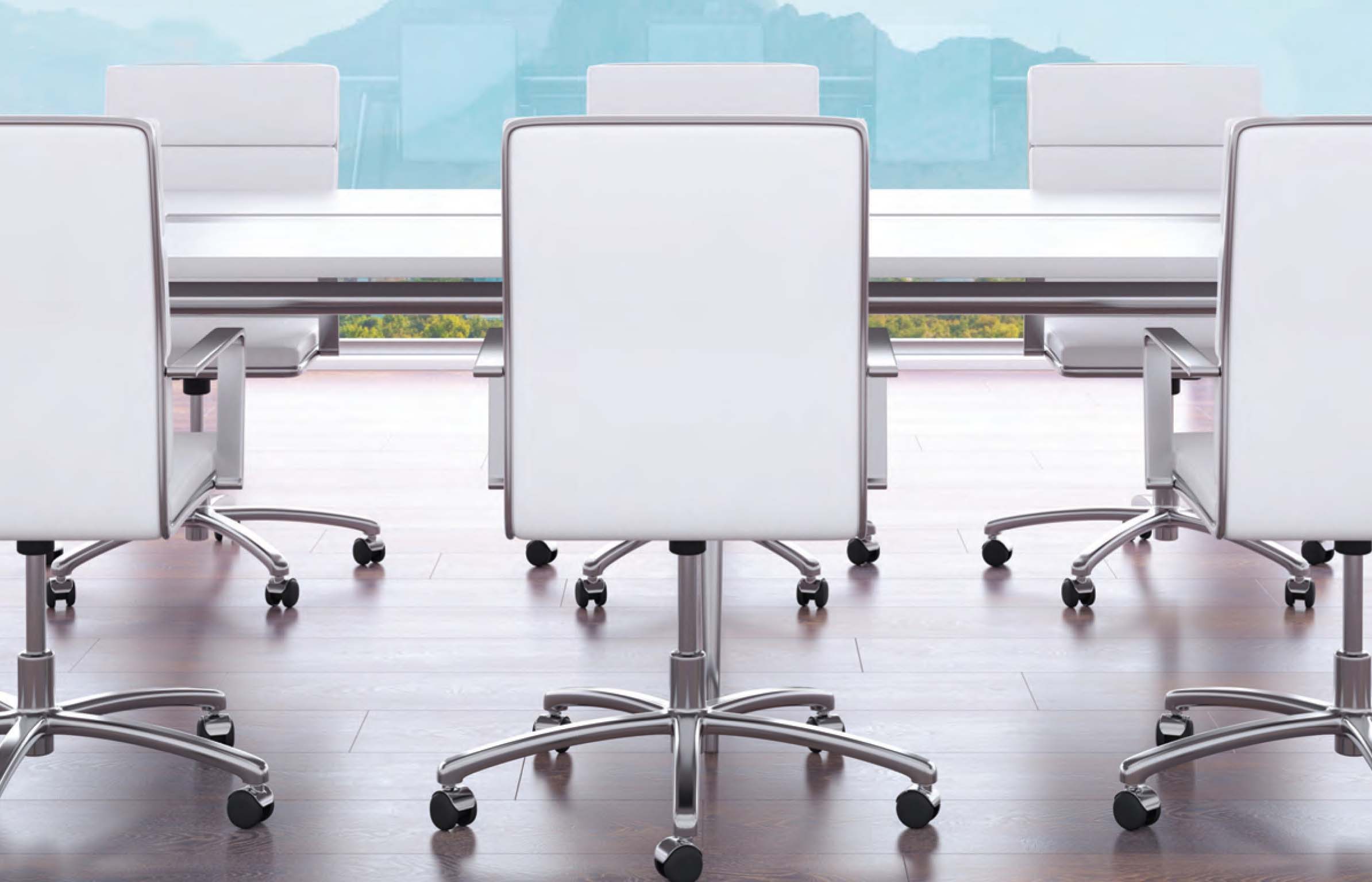
The best board meetings, says Ninan Chacko, CEO of Travel Leaders Group, are those where the board helps the chief executive “refine, adjust and pressure-test where the company is heading.” Making that happen is as much art as it is science, notes Chacko, whose $21 billion-company is headquartered in Plymouth, Minnesota.
For Chacko, planning a successful board meeting begins with building an agenda that is both engaging and instructive. But the agenda is just one piece of a puzzle that involves a surprising number of decisions—everything from choosing the right venue to planning seating arrangements.
“For board meetings, the smaller details really come into play,” notes Terri Woodin, senior director of global meeting services for Meeting Sites Resource, a meetings-management firm headquartered in Irvine, California.
LOCATION, LOCATION, LOCATION
When John F. Barrett, CEO of Western & Southern Financial Group, sits down with his team to plan the Cincinnati firm’s board meetings, one not-so-small detail that’s top of mind is venue. “When working with very busy board members, it is extremely important for our meetings to be held in locations that are easily accessible,” he says. That translates to a hotel, resort or conference center relatively near an airport served by frequent direct flights. “Second, we want our board members to be relaxed and comfortable in the facility, so they can bring their full focus to the specific agenda items but also continue informal discussions throughout the meeting schedule,” adds Barrett.
“The best board meetings are those where the board helps the chief executive refine, adjust and pressure-test where the company is heading.”
CHOOSE ONLY THE BEST, BUT . . .
Given the status of board meeting attendees, the venue must be of the highest caliber—generally four-diamond or better. “It’s not just because they’re executives and they deserve it,” notes Woodin. “You need to be guaranteed a certain level of quality. You can’t have the Internet breaking down; the conference phone has to work. You want things to run smoothly, efficiently and effectively.”
But high-caliber doesn’t necessarily mean lavish. “The venue needs to be upscale and fresh—but not too upscale,” says Paul Tessitore, director of American Express Meetings & Events, citing current concerns about the optics of such meetings. “It can’t give the perception of being too over the top.”
The need to avoid the perception of opulence is especially true if your company or industry is getting a lot of attention in the news. As Woodin says, “You don’t want to end up on CNN.” When it’s necessary to fly under the radar, Woodin favors independent hotels or independents associated with a chain. Tessitore prefers smaller properties for board meetings for a different reason. He wants to make sure that the gathering is the hotel’s primary focus, “so we’re not vying for their attention or overpowered by large meetings nearby.”
Typically, Western & Southern Financial Group will choose an executive retreat-style property that has golf and tennis and perhaps a spa onsite. “The majority of the time is used for business and collaboration, but we do try to go to a location where there’s a little leisure activity,” says Kathy Roche, director of meeting planning, travel and events.
THE MEETING SPACE: MORE THAN A ROOM
The meeting space itself is of paramount importance. Because of the confidential nature of board meeting proceedings, privacy is crucial. Ideally, the meeting room is situated apart from other meeting rooms in an area where there’s not a lot of foot traffic, such as at the end of a corridor, on its own floor or even with a private entrance. “You need to make sure there aren’t people within earshot of anything going on,” says Tessitore. “These conversations tend to come out into hallways during breaks.”


0

1:00 - 5:00 pm
Over 70% of Executives Surveyed Agree: Many Strategic Planning Efforts Lack Systematic Approach Tips for Enhancing Your Strategic Planning Process
Executives expressed frustration with their current strategic planning process. Issues include:
Steve Rutan and Denise Harrison have put together an afternoon workshop that will provide the tools you need to address these concerns. They have worked with hundreds of executives to develop a systematic approach that will enable your team to make better decisions during strategic planning. Steve and Denise will walk you through exercises for prioritizing your lists and steps that will reset and reinvigorate your process. This will be a hands-on workshop that will enable you to think about your business as you use the tools that are being presented. If you are ready for a Strategic Planning tune-up, select this workshop in your registration form. The additional fee of $695 will be added to your total.

2:00 - 5:00 pm
Female leaders face the same issues all leaders do, but they often face additional challenges too. In this peer session, we will facilitate a discussion of best practices and how to overcome common barriers to help women leaders be more effective within and outside their organizations.
Limited space available.

10:30 - 5:00 pm
General’s Retreat at Hermitage Golf Course
Sponsored by UBS
General’s Retreat, built in 1986 with architect Gary Roger Baird, has been voted the “Best Golf Course in Nashville” and is a “must play” when visiting the Nashville, Tennessee area. With the beautiful setting along the Cumberland River, golfers of all capabilities will thoroughly enjoy the golf, scenery and hospitality.
The golf outing fee includes transportation to and from the hotel, greens/cart fees, use of practice facilities, and boxed lunch. The bus will leave the hotel at 10:30 am for a noon shotgun start and return to the hotel after the cocktail reception following the completion of the round.